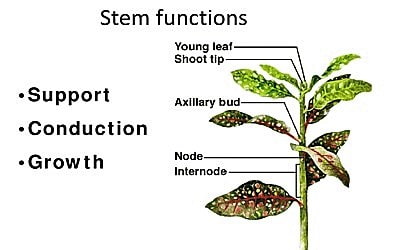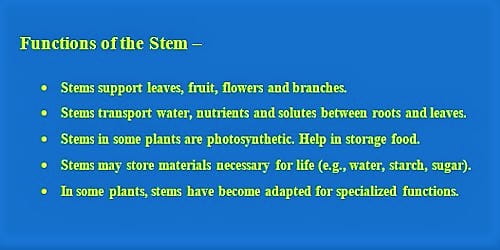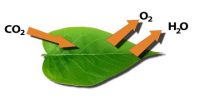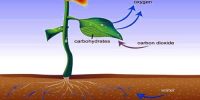The stem conducts water, minerals, and food to other parts of the plant; it can also store food, and green stems themselves generate food. They are generally above ground, although the stems of some plants, such as the potato, also grow underground. It involves food production throughout photosynthesis, and it also stores the products made throughout photosynthesis. A stem attaches the roots to the leaves, provides support, stores food, and holds the leaves, flowers, and buds. Their major function is to provide sustenance to the plant, holding leaves, flowers, and buds; in some cases, stems also store food for the plant.
Types of Stems
Based on Stem location with admiration to the ground, there are three types of stems:
- Underground stem
- Aerial stem
- Subaerial stem.
Underground stems: These stems remain at the ground level and produce aerial shoots that grow above the soil. Their roots are apparently present. These stems are preordained for storage of food and perennation. Example: Ginger, Potato, Onion.
Subaerial Stems: These stems run parallel to the soil and give off roots at certain intervals or nodes.
Aerial Stems: These stems are found above the soil and execute varied functions. Example: roses, flowers.

Functions of the stem: In plant growth and development, the plant stem performs the following functions –
- A stem connects the roots to the leaves, provides support, stores food, and holds the leaves, flowers, and buds.
- The stem bears the weight of branches, leaves, flower, and fruits
- Stem spreads out branches and leaves in such a way that they can get enough sunlight.
- Stem dispatches water and mineral salts to the branches, leaves, flowers, and fruits.
- When young, green stems produce a little quantity of food through photosynthesis.
- A plant’s stem serves as the support structure for its above-ground components and as a conduit through which water and nutrients can travel.
The main functions of the stem are to provide support for plant leaves, transport minerals and water from the soil and carry sugar or glucose. Along with water, the stem carries products from photosynthesis and nutrients to the roots and leaves.
Other Common and important functions are –
- It supports and holds leaves, flowers, and fruits; also carry out water and minerals from roots to the rest of the plant. It accommodates the transport system which is necessary for the vertical and lateral movement of water and sap within the plant body.
- The stem allows the leaves to assemble in a way that they are capable to accept straight sunlight in order to proficiently execute photosynthesis. Translocation natural food from leaves to the rest of the play. The arrangement and place of leaves also allow for gas exchange. The green stems take part in photosynthesis.
- The xylem and phloem present in the vascular bundles of stems conduct water and minerals across the plant.
- Stems bear flowers and fruits in a position that facilitates the processes of pollination, fertilization, and dispersion of seeds. It supports the leaves, flowers, and fruits and connects them with the roots.
- Some stems suffer alteration to store food and water. In trees and shrubs, the main stem or trunk provides a strong columnar structure from which branches are attached, raising the leaves upward to be exposed more fully to the sun. Example: succulents.
- Few green stems contain chloroplasts and are proficient of carrying out photosynthesis as well.
- Some stems are modified to carry out vegetative propagation which is a form of asexual reproduction seen in plants.
- In many plants stem modified to perform functions like food storage, vegetative propagation and perennation i.e. to tide over the unfavorable periods.
- It helps store water, as in cacti, and the products of photosynthesis, as in the trunk of sago palm and sweet palm which store large stock of starch.















